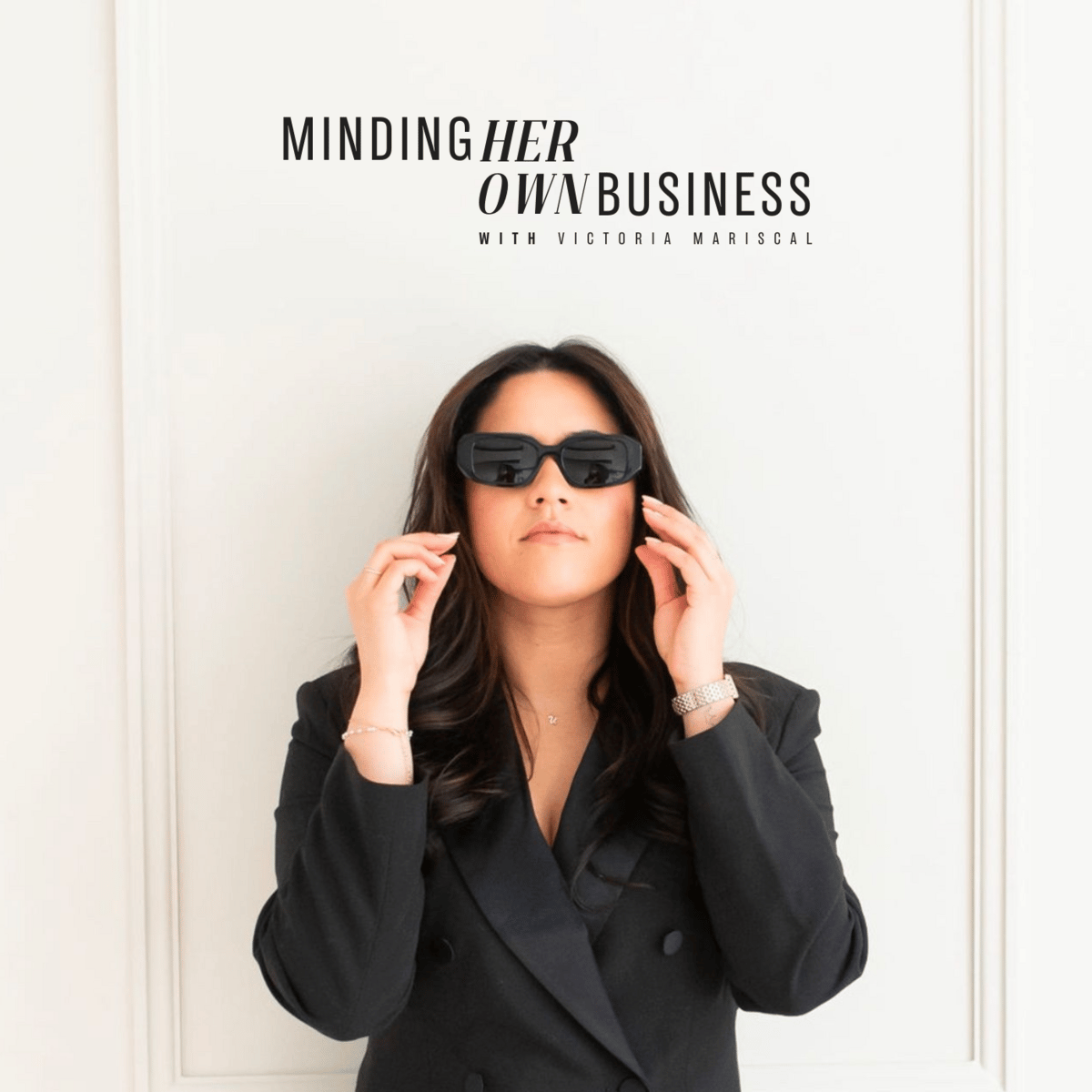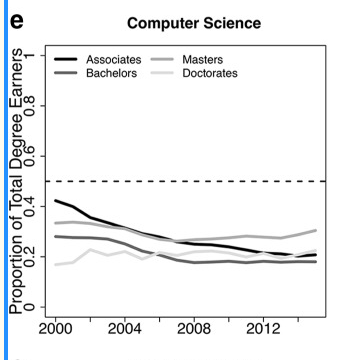Picture this: You're stepping into a bustling boardroom where leaders are debating the future of technology. Whiteboards are scrawled with algorithm sketches, roadmaps for AI products sprawl across tables, and passionate discussions about ethical guardrails and funding strategies fill the air. Now pause and look around the room. How many women do you see shaping these conversations that will define our technological future?
The numbers tell us: not nearly enough. And honestly? That should terrify anyone who actually cares about building technology that works for everyone, not just the dudes who code it.
The Math Isn't Mathing
Here's your reality check: Women make up 57% of the overall U.S. workforce, but when it comes to tech, their share shrinks to just 27%. Narrow the focus to STEM fields, and women hover at 29% of the workforce. But here's where it gets really spicy (and by spicy, I mean completely messed up): zoom in on artificial intelligence, and the gender gap becomes a straight-up chasm.
Globally, women hold just 22-26% of AI-specific roles. The deeper you go into technical layers, the fewer women you find. Women make up only 18% of AI researchers and 22% of AI professionals globally. Translation? The closer you get to the engines of technological change, the fewer women there are at the table making decisions that will impact literally billions of lives.
This isn't just a diversity problem, it's strategic blindness that's costing us innovation, profit, and honestly, our collective sanity.
The Pipeline That's Basically a Sieve at This Point
Everyone loves to blame the "pipeline problem," but let's get real about what's actually happening because the numbers are wild. In the 1980s, women earned nearly 40% of computer science degrees. Today? That figure has plummeted to 23% in North America. At the graduate level, women earn about 29% of CS master's degrees and 24% of CS PhDs.
Here's the part that really gets me fired up: even when women make it into academia, they face an uphill battle that would make Sisyphus weep. Women occupy only 16% of tenure-track AI faculty positions globally. That means fewer role models to inspire the next generation, creating this vicious cycle of underrepresentation that just keeps perpetuating itself.
Like, we're literally eating our own tail here, people.
The Executive Exodus (AKA Where Women Go to Disappear)
The leadership data? Buckle up, because it's about to get brutal. For every 100 men promoted to a managerial role, only 81 women receive the same advancement. That's right—we're losing women at the very first step up the ladder. The higher you look, the sharper the drop:
Women hold 24% of managerial roles in tech and STEM (already rough)
In C-suite roles within STEM, that figure falls to 12% (getting worse)
For CIO or CTO positions, it shrinks to 8-9% (absolutely tragic)
At the helm of the world's top 100 companies, only 8% of CEOs are women (I can't even)
The result? The rooms where decisions about AI investments, product directions, and ethical frameworks are made are systematically missing women's perspectives. Then we all act surprised when AI systems are biased. Really?
The 2% Problem (Or: When Venture Capital Becomes Comedy)
Okay, beyond workforce representation, there's this even more insidious problem that makes my blood pressure spike every time I think about it: the venture capital gap. Startups founded solely by women consistently receive only about 2% of total venture capital dollars in the United States. This number has remained stubbornly low, hovering between 1.9%-2.8% over the last five years.
Let me repeat that because it's so absurd it bears repeating: 2%. TWO PERCENT.
Meanwhile, approximately 84% of funding flows to all-male founding teams. Mixed-gender teams do better, capturing 14%-25% of VC dollars, but this still highlights the extreme disadvantage faced by women entrepreneurs who dare to start companies alone.
Here's where it gets even more ridiculous: the disparity isn't just about deal count, it's about deal size. The average funding round for a female-only team is approximately $5.2 million, less than half the $11.7 million average for their male counterparts. This funding gap actually widens at each stage of a startup's life, dropping from 3.2% at seed stage to just 1.8% for Series C+ rounds.
So basically, the more successful women get, the less likely they are to get funded. Make it make sense.
The Performance Paradox (Or: Why VCs Are Really Bad at Math)
Here's where the data gets absolutely wild and also makes me want to scream: when women-led companies do get funded, they consistently outperform their male-led peers. In 2024, companies with at least one female founder accounted for 24.3% of all U.S. venture-backed exits—a massive overperformance relative to the tiny amount of capital they received.
Studies show that women-led startups are more capital-efficient, generate higher revenue per dollar invested, and have lower failure rates than their male-only counterparts. So this isn't just about equity (though that matters too)—it's about investors systematically overlooking the most profitable segment of the market.
I mean, if you're going to be capitalist about it, at least be good at capitalism, you know?
The Bro Culture Death Spiral (It's Exactly What It Sounds Like)
Beyond all these depressing numbers, women in tech face a daily reality that can only be described as "death by a thousand cuts" (and I'm being generous here). A staggering 72% of women in tech report experiencing male-dominated "bro cultures" that create hostile environments where women feel like outsiders looking in.
This isn't just about uncomfortable jokes at company happy hours (though honestly, those need to stop too). It's about unconscious bias, persistent stereotypes about women's technical ability, and workplace cultures that often reward aggression over collaboration. It's exhausting, and frankly, it's 2025—we should be past this.
The AI Adoption Gap (Because Apparently We Have More Problems)
Here's a trend that should worry every business leader who's paying attention: women are adopting AI tools at significantly lower rates than men. Harvard research found that women constitute only 42% of ChatGPT's website users and just 27% of its mobile app users.
Why? Well, some women express greater ethical concerns about AI deployment (valid, considering who's building these systems). Others worry that using AI assistance will be viewed as "cheating" or incompetence, while for men it might be seen as "leveraging resources efficiently" (the double standard is real, y'all).
This creates this dangerous feedback loop that makes me want to pull my hair out: underrepresentation in AI development leads to biased systems, which then harm women and deepen their distrust of the technology. It's like we're actively working against ourselves.
How to Actually Fix This (Because I'm Not Just Here to Complain)
Look, the hurdles are real, but they're not insurmountable. Here's what needs to happen, and I'm talking about actual solutions, not more diversity panels:
For the Go-Getters: Efficient Upskilling That Won't Burn You Out
Micro-learning magic: Use those 15-minute pockets during your day with platforms like DeepLearning.AI (your commute just became useful)
Be smart about priorities: Focus on high-leverage skills like prompt engineering first—quick wins that translate to immediate productivity boosts
Automate to liberate yourself: Use AI assistants for drafting emails and summarizing documents (yes, you have permission to let robots do the boring stuff)
Embrace no-code tools: Prototype ideas quickly with visual builders like Bubble or Webflow—you don't need to code everything from scratch
For Organizations That Actually Want Change: Systemic Fixes
Fix the culture, not just the hiring numbers: Address that 72% of women reporting hostile work cultures (hint: more pizza parties won't solve this)
Create real accountability: Tie executive compensation to diversity outcomes—you'll be amazed how quickly priorities shift when bonuses are on the line
Actually invest in skills development: Provide AI training and development opportunities that don't assume people have infinite free time
Build inclusive products from day one: Diverse teams create better, less biased technology—it's not rocket science
The Future Is Digital (Women Should Be Leading It)
AI is moving from "cool new feature" to the electricity powering every workflow, product, and decision. Multimodal AI (handling text, images, audio, and code simultaneously) and agentic workflows (AI that takes independent action) are coming whether we're ready or not.
Women in engineering, product, and design are exactly who should be leading this transformation. But only if we actually remove the barriers preventing them from getting there instead of just talking about removing them.
The Bottom Line: We're Failing Innovation Itself
The future of AI is being written right now, and we're writing it with literally half the population's perspective missing. Companies that figure this out first will have a massive competitive advantage. Those that don't? Well, they'll be building technology for a world that doesn't actually exist.
The real question isn't who uses AI more. It's how do we create environments where women feel safe and rewarded for leveraging AI? How do we ensure trust and recognition, not penalty, for adopting the tools that define the future of work?
Because this isn't just about productivity. It's about who gets to shape the next era of technology and power.
By 2030, AI will be integrated into every business process (whether we like it or not). The question isn't whether women can succeed in AI, the data shows they already outperform when given half a chance. The question is whether the industry is smart enough to get out of its own way and tap into the full talent pool.
Because honestly? At 2% funding and 22% representation, we're not just failing women, we're failing at basic business strategy. And in a world where AI is becoming the competitive differentiator, that's not just unfair. It's unsustainable.
Time to do better. For all our sakes.

Have ideas for future newsletters?
Hit reply and let me know what you'd like to see!
XX

P.S. Did you love this edit? Take 5 seconds to forward this to a friend who could use some no-bull advice and insights to get them through those “life is life-ing” days.









